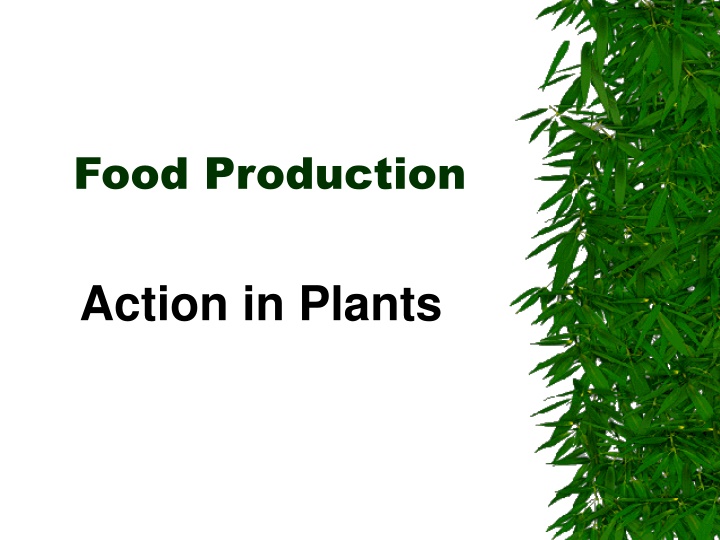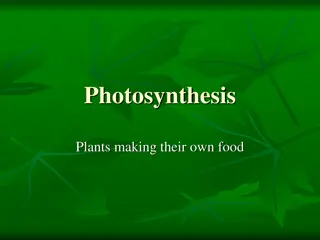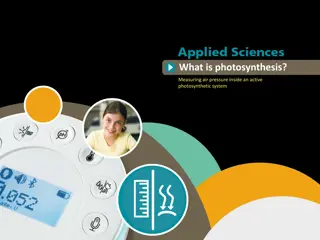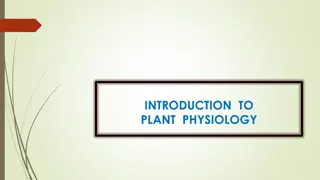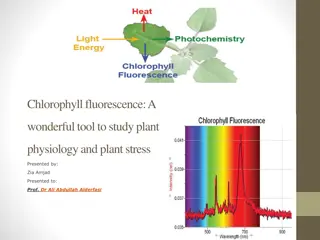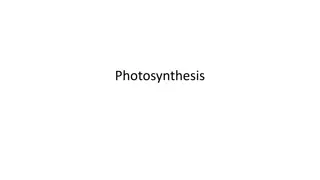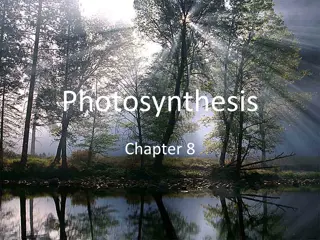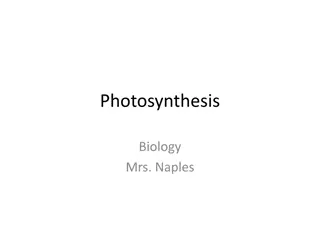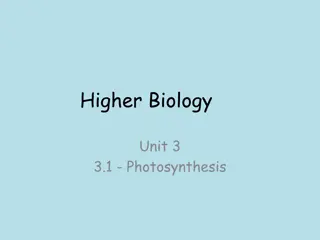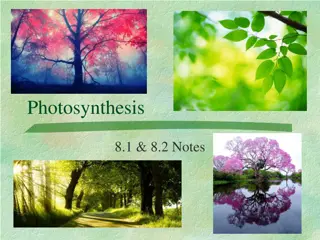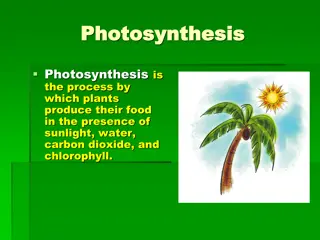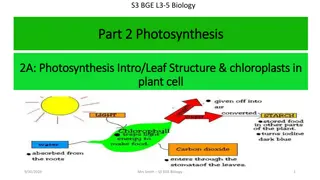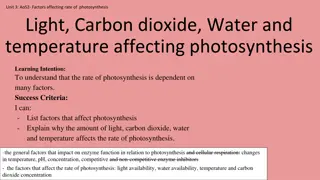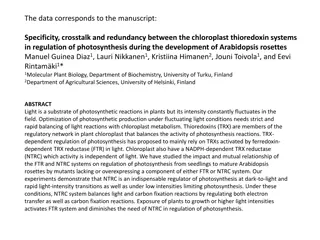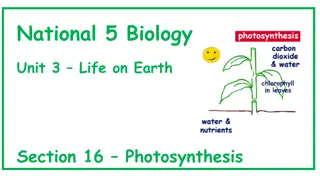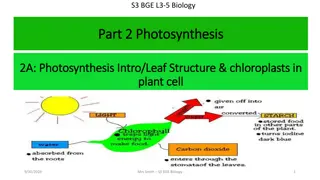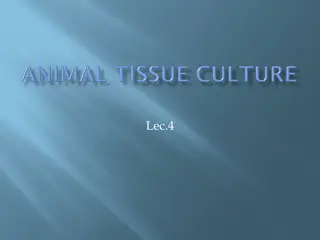Plant & Animal Cell Structures and Photosynthesis Process
Plant and animal cells have distinct structures, notably cellulose cell walls in plants and chloroplasts for photosynthesis. Photosynthesis is crucial for plants to produce food. Factors influencing photosynthesis include carbon dioxide concentration, light intensity, temperature, and water availability. Furthermore, there is interdependence between plants and animals, as plants release oxygen for animal respiration while animals produce carbon dioxide for plant photosynthesis.
Download Presentation

Please find below an Image/Link to download the presentation.
The content on the website is provided AS IS for your information and personal use only. It may not be sold, licensed, or shared on other websites without obtaining consent from the author.If you encounter any issues during the download, it is possible that the publisher has removed the file from their server.
You are allowed to download the files provided on this website for personal or commercial use, subject to the condition that they are used lawfully. All files are the property of their respective owners.
The content on the website is provided AS IS for your information and personal use only. It may not be sold, licensed, or shared on other websites without obtaining consent from the author.
E N D
Presentation Transcript
Food Production Action in Plants
Plant cells Plant cells contain a jelly-like cytoplasm They all have a nucleus They usually have a sap-filled vacuole The cell is surrounded by a cell membrane Around the cell membrane there is a cellulose cell wall Plant cells in green parts of a plant like leaves also contain chloroplasts
Animal cells Animal cells contain: a nucleus, cytoplasm cell membrane but unlike plant cells they do not have cellulose cell walls or chloroplasts
Photosynthesis This is the process by which plants produce their own food Photosynthesis occurs in the chloroplasts found in cells in leaves Carbon dioxide is reacted with water to produce glucose and oxygen Chlorophyll and sunlight energy is required for this reaction to take place
Chloroplasts The cells found in leaves have lots of chloroplasts for photosynthesis to take place in.
CO2 + H2O C6H12O6 + O2 Sunlight & chlorophyll
What factors can affect the rate of photosynthesis? Water + carbon dioxide glucose + oxygen 6H2O + 6CO2 C6H12O6 + 6O2 The concentration of carbon dioxide will affect the rate of photosynthesis As sunlight is needed for photosynthesis, the light intensity will also affect the rate of photosynthesis Also, the temperature will also affect the rate of this reaction From the equation for photosynthesis we can see that the amount of water available would also affect the rate of photosynthesis
The interdependance between plants and animals Plants need to have a supply of carbon dioxide in the air so they can use it fir photosynthesis Plants will give out oxygen produced from photosynthesis into the air Animals need this oxygen for respiration to make energy Animals produce waste carbon dioxide from respiration which is put into the air
How does carbon dioxide enter and oxygen go out of the leaves ? On the under-side of leaves there are tiny holes called stomata Special guard cells are responsible for opening and closing stomata stoma Guard cell
How does the water get into plants? Water is absorbed through root hair cells by osmosis In osmosis water moves from an area of high water concentration to a region of low water concentration A root hair cell has a large surface area and thin walls to help water uptake
Osmosis Selectively permeable membrane
Why is water needed in plants? Water is required for photosynthesis Water is needed to maintain turgidity i.e. to keep plants cells rigid and to stop them from losing their shape and going flaccid (floppy) Evaporation of water through stomata cools the plant down on a hot day
Transporting substances inside the plant Transporting substances inside the plant Xylem Xylem tissue is made up of dead cells joined end to end (with no end walls ) Xylem tubes contain lignin which makes them strong and stiff Xylem tubes take water up the plant, along with mineral salts dissolved in the water
Phloem Phloem Phloem tubes are made of living cells with perforated end-plates (to let substances pass through) Phloem tubes transport food made in the leaves to all other parts of the plant Substances such as starch, fats and proteins are carried by phloem to the growing shoot tips and root tips, and to storage organs in the roots Phloem can transport food in both directions
A cross-section through a stem, stained to show the phloem and xylem vessels
What else can get out of leaves through the stomata? Water is lost through the stomata during transpiration
What is transpiration? Transpiration is the constant flow of water up the plant It is caused by the evaporation of water from the plant through the stomata This creates a slight shortage of water in the leaf, which causes more water to be drawn up into the leaf from the rest of the plant This in turn results in more water being drawn in through the roots
Why is transpiration useful? It transports minerals from the soil It cools the plant
What factors can affect the rate of water loss through stomata? Temperature Light Air movement Humidity
Why do plants need minerals? Plants need minerals for healthy growth Large amounts of nitrates are needed for making proteins Smaller amounts of iron and magnesium are needed to make chlorophyll Leaves showing varying amounts of magnesium deficiency
How do plants get their minerals? Plants take up some dissolved mineral salts by diffusion However, diffusion will not happen if the concentration of minerals in the soil is greater inside the root (which is usually the case) If the concentration of minerals outside the root is lower than inside, then the root will take up mineral ions by active transport These minerals are essential for a plants growth
What is active transport? Active transport allows the plant to absorb minerals against a concentration gradient Energy is needed for active transport The plant gets this energy from respiration
What are plant hormones? These are chemicals known as auxins Auxins are plant growth hormones They control the growing parts of the plant, I.e. the tips of shoots and roots Auxins are made in the tips, they diffuse backwards are lilttle way, and cause cells to elongate just behind the tips
How can we use plant hormones commercially? We can put rooting growth hormone onto the end of a cutting to make new roots grow This enables farmers to make clones of desirable plants very quickly
Other uses for plant hormones Killing weeds Selective weedkillers have been developed using plant hormones These weedkillers will broad-leaved plants (which are usually weeds) Producing seedless fruit Growth hormones can be applied to unpollinated flowers The hormones will cause the fruit to develop and grow However, as the flower was not pollinated, no seeds will grow
Plant tissue culture Hormones are added to the agar jelly that is used for culturing plants Some hormones will cause unspecialised cells to grow into specialised shoot cells Another hormone is used to cause roots to grow This is an important method for agriculture and for research
This powerpoint was kindly donated to www.worldofteaching.com http://www.worldofteaching.com is home to over a thousand powerpoints submitted by teachers. This is a completely free site and requires no registration. Please visit and I hope it will help in your teaching.
